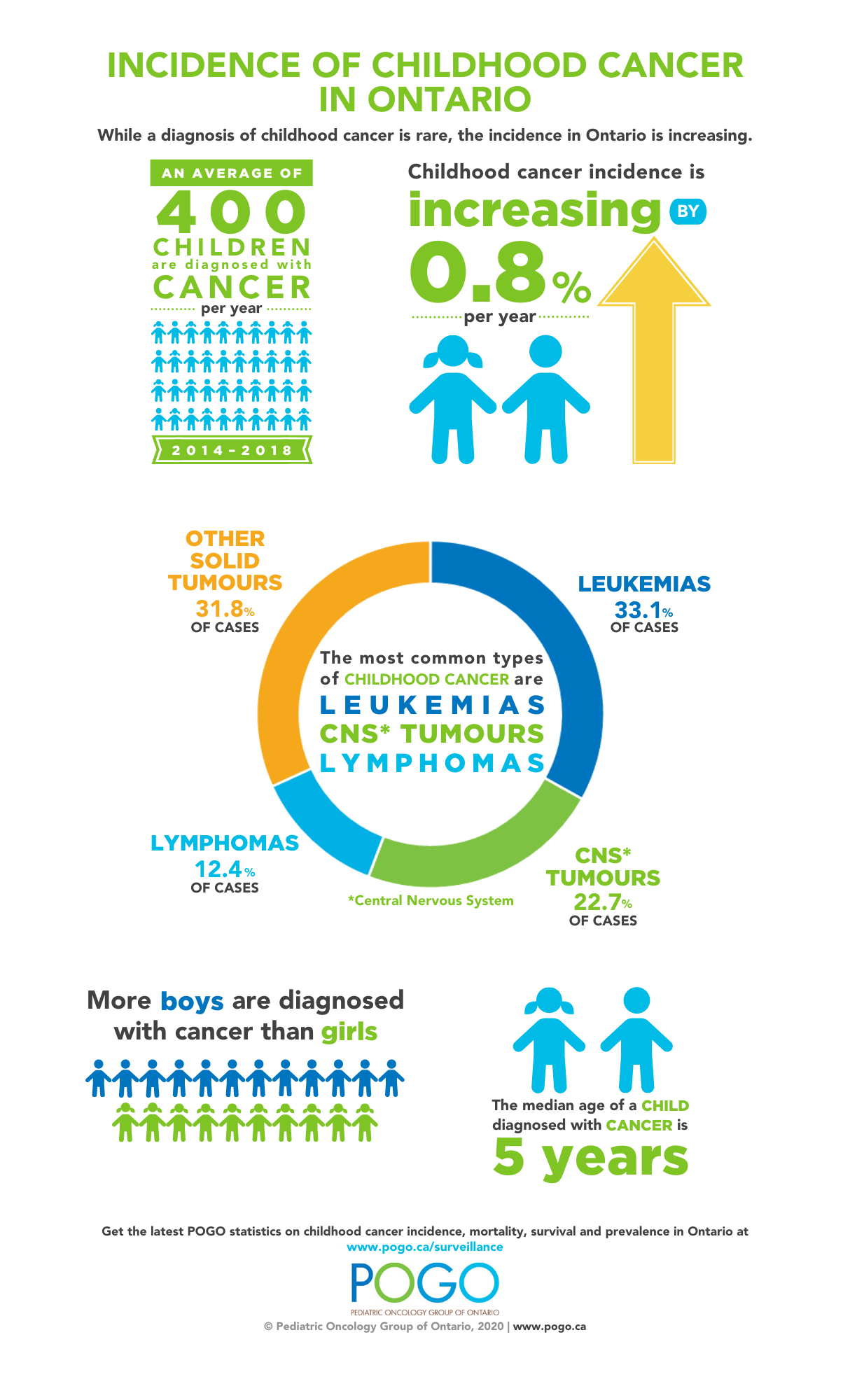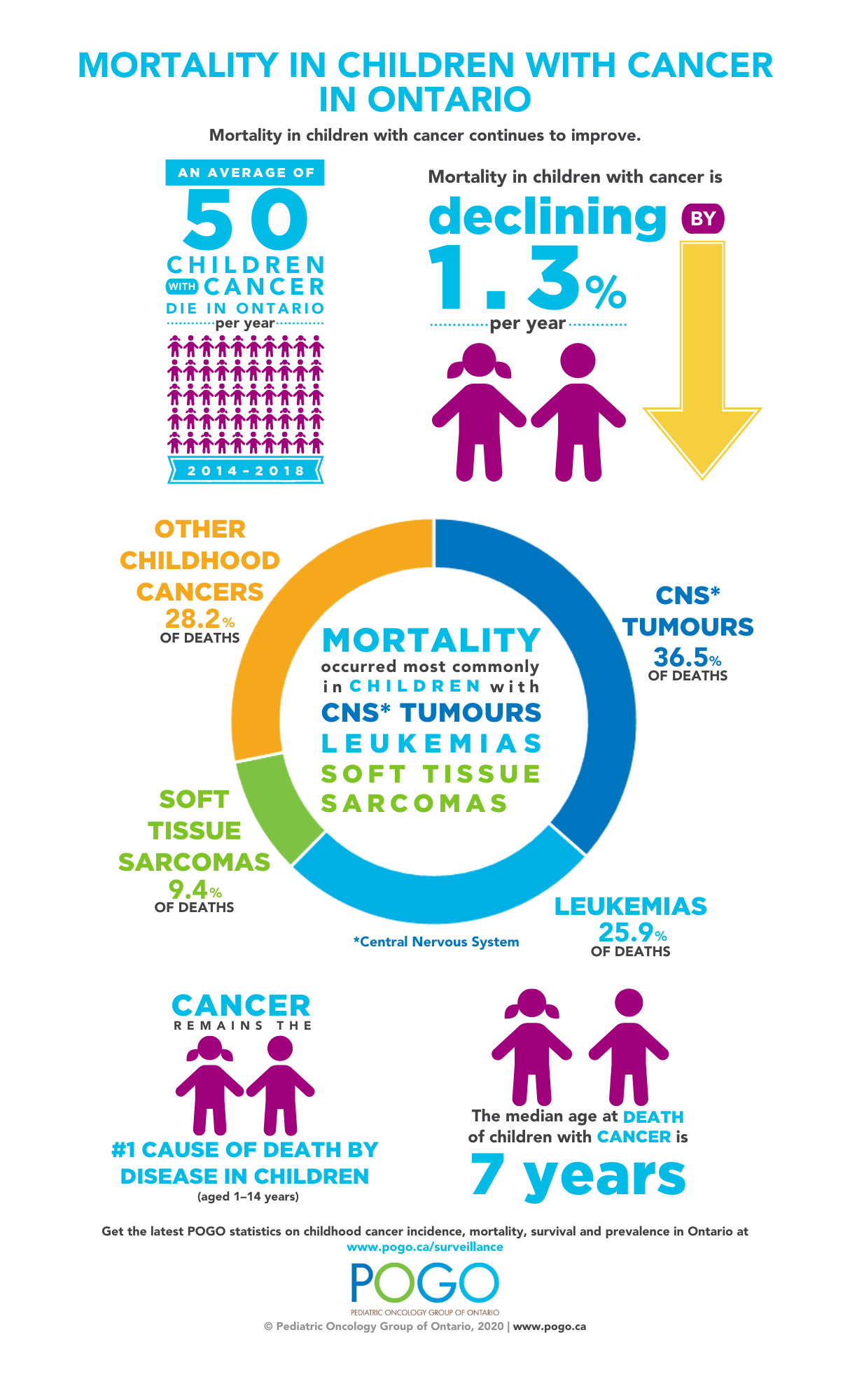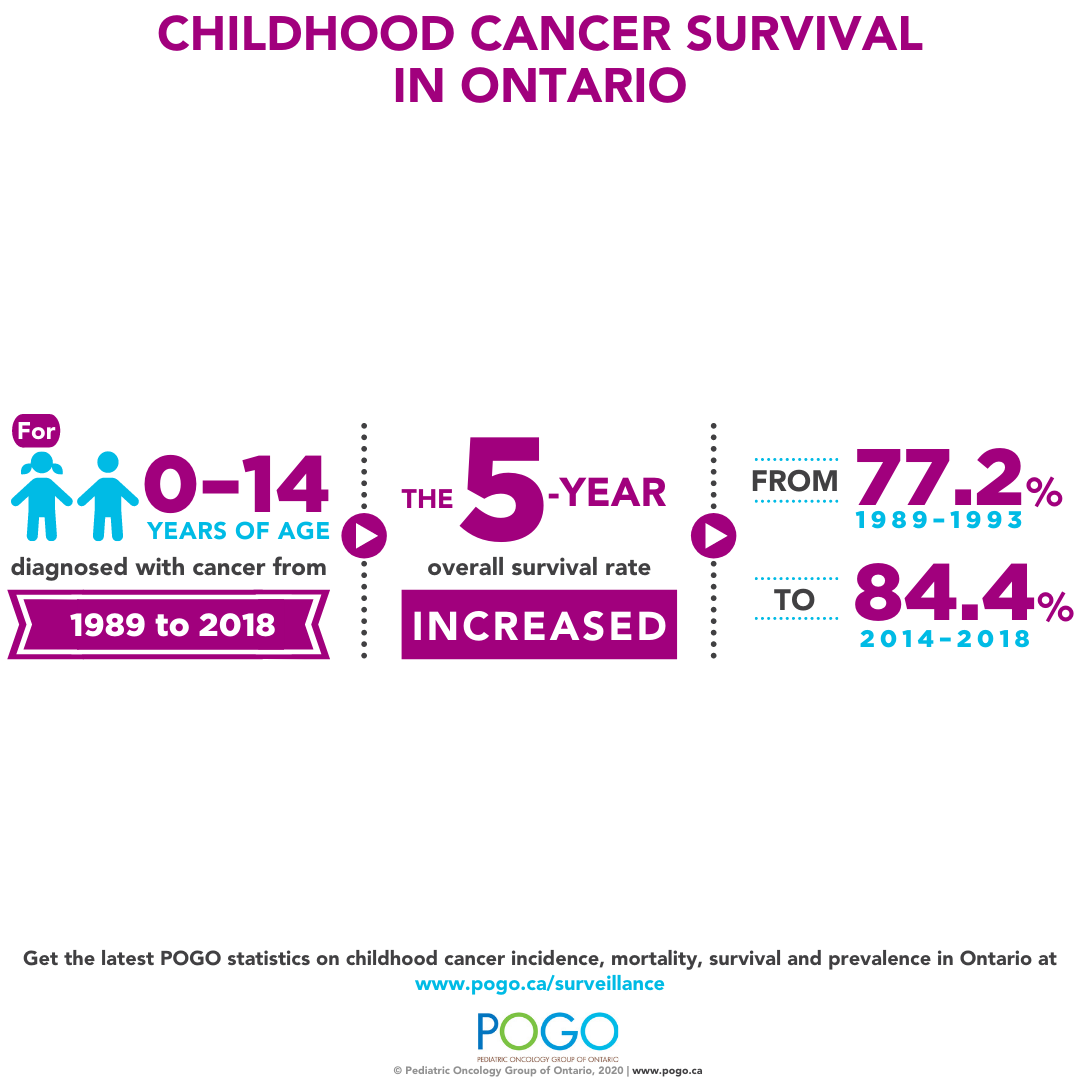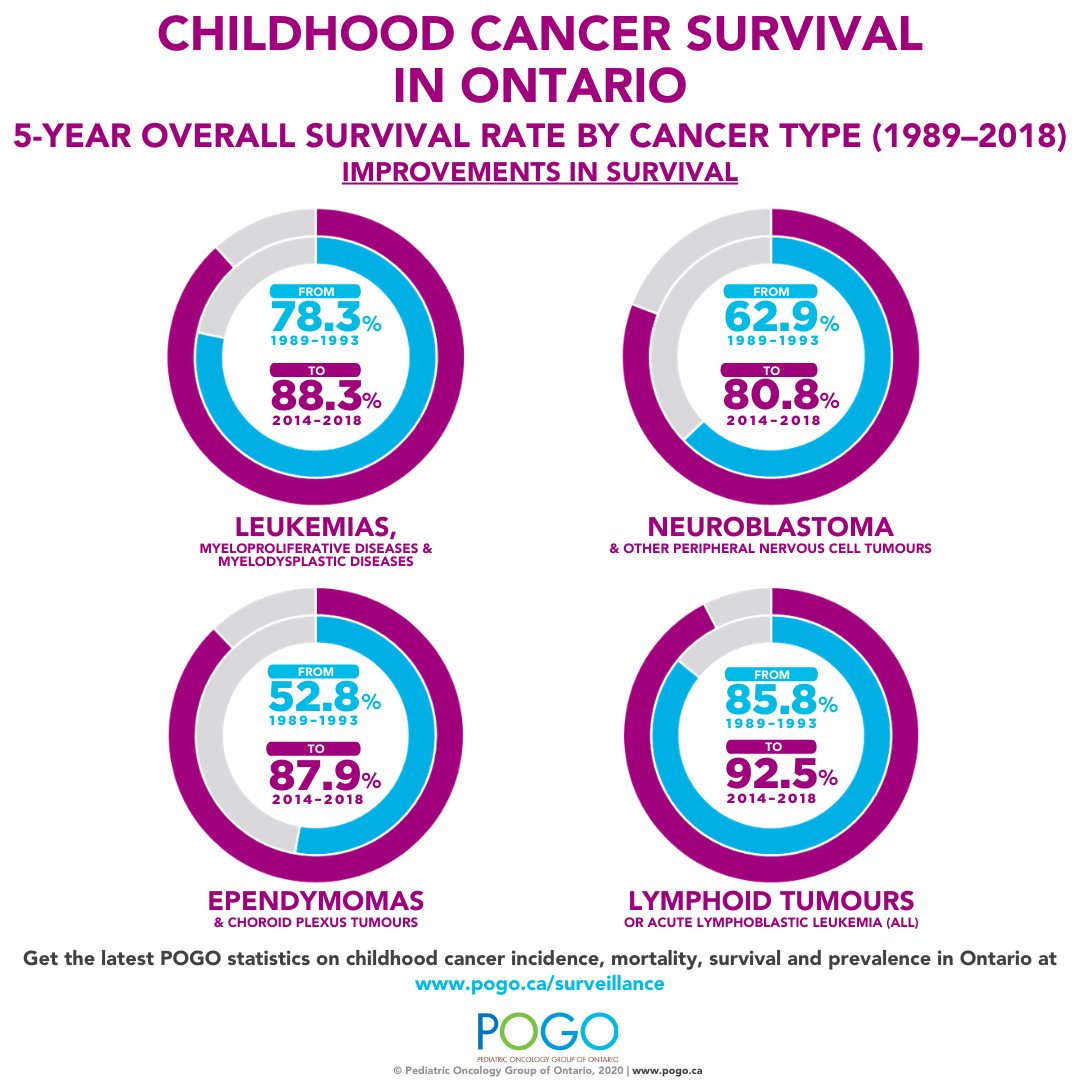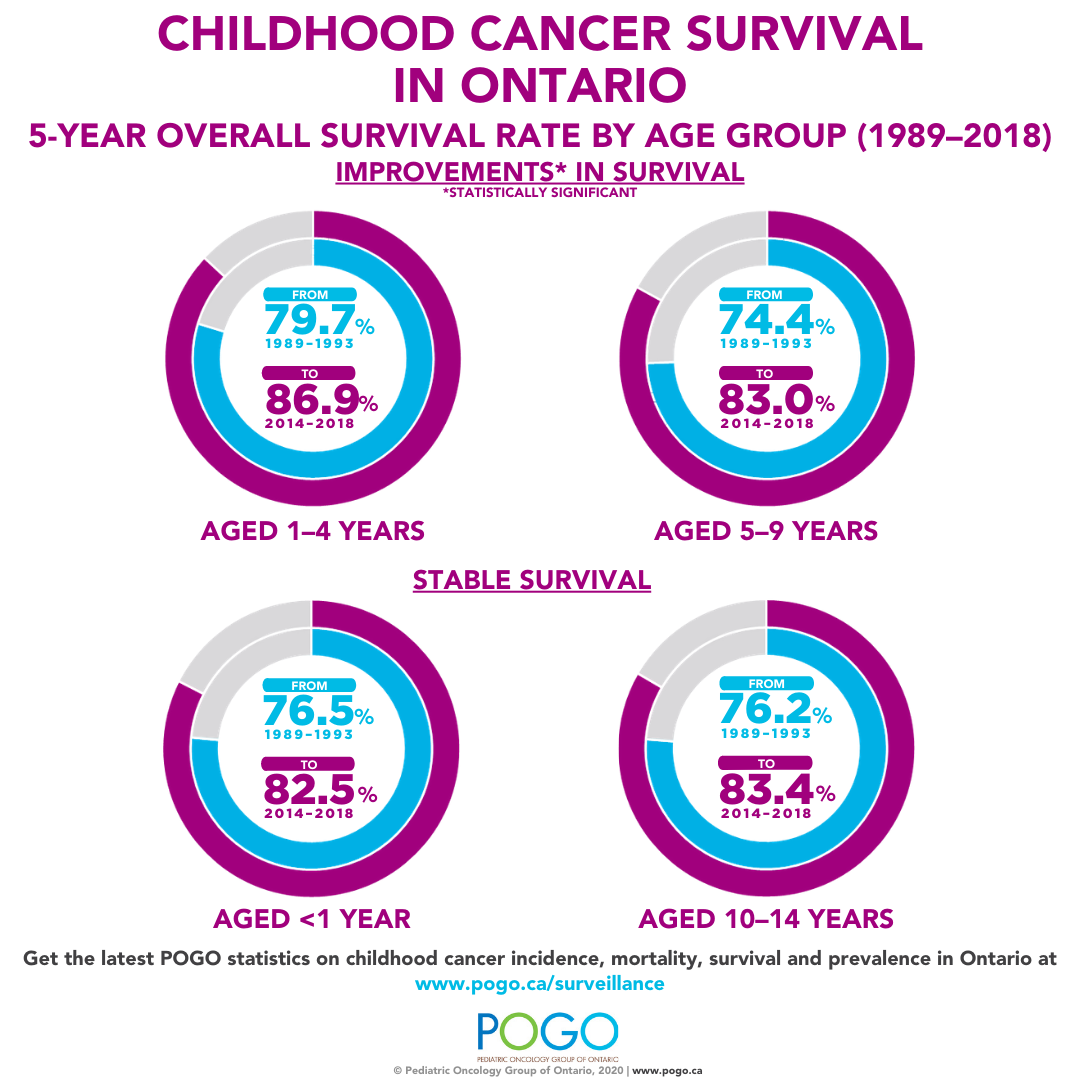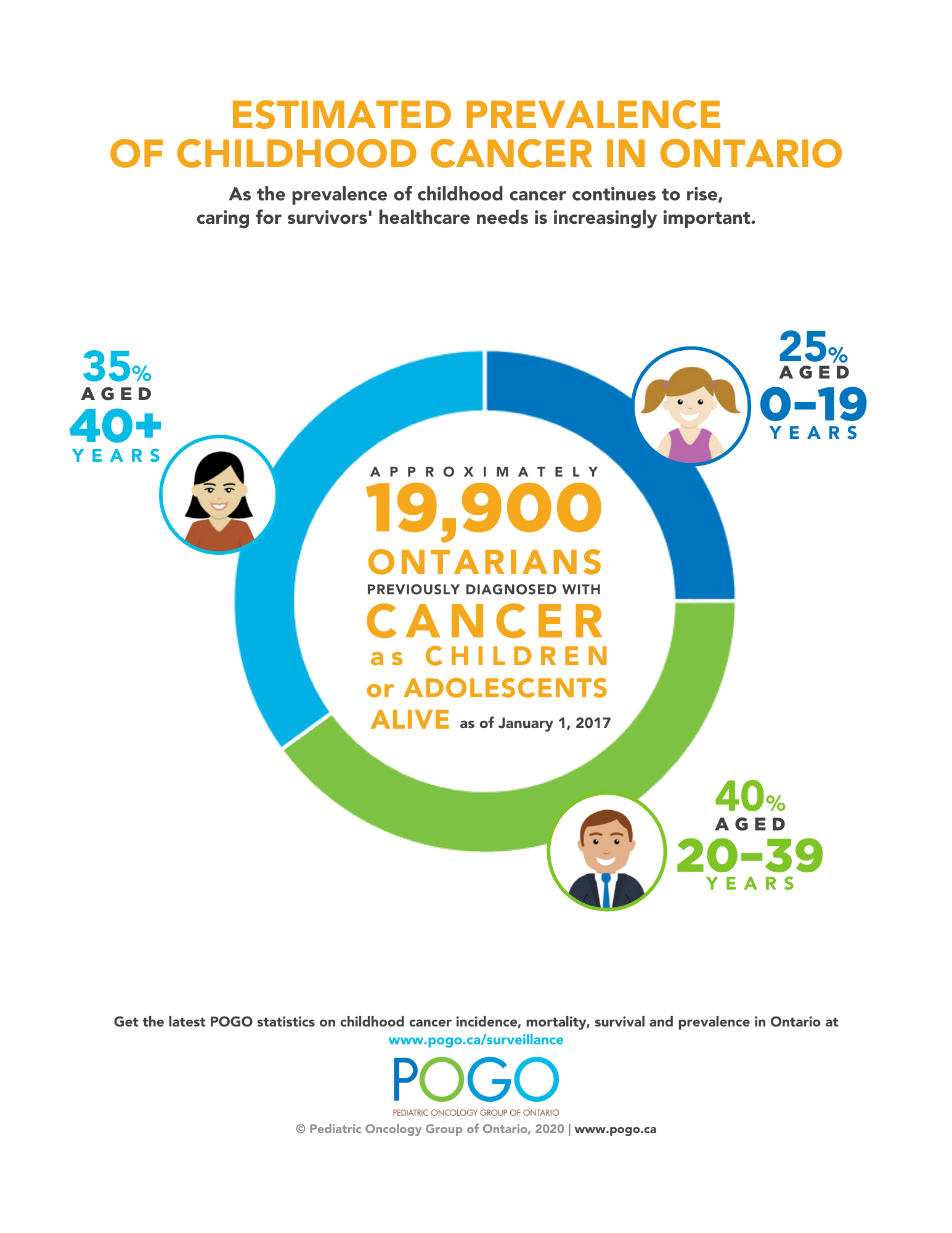
Childhood Cancer in Ontario: The 2020 POGO Surveillance Report provides updated childhood cancer statistics on the impact and burden of cancer in children aged 0–14 years in Ontario. It analyzes childhood cancer incidence (new cancers), mortality (deaths), survival (number of children diagnosed with cancer who survive 5 years after diagnosis) and estimates of prevalence (the number of Ontarians alive today with a previous diagnosis of cancer as a child or adolescent, aged 0–19 years). New in 2020: In addition to updating the data and trends, new details about childhood cancer subtypes and age groups have been added.
*The report is intended for use with Microsoft Office Excel 2010 and later versions. It uses the Excel Macro-Enabled Workbook file format (file extension *.xlsm) to deliver the best user experience. Please review our one-page instructions Accessing the 2020 POGO Surveillance Report.
Childhood Cancer in Ontario: The 2020 POGO Surveillance Report supports service delivery planning and evaluation, policy advice, decision-making and research, with the ultimate goal of transforming over 30 years of data from POGO’s active childhood cancer registry, POGONIS, into actionable information for use by POGO and our system partners. It represents the latest edition in our series of POGO childhood cancer surveillance statistics reports, based on data sourced primarily from POGONIS.
By monitoring and publicly reporting Ontario childhood cancer statistics, POGO ensures the right data are available and being used to drive an effective childhood cancer system, one of the strategic objectives of our Childhood Cancer Care Plan: A Roadmap for Ontario 2024-2029.
Key Messages
Incidence Rates and Trends
KEY MESSAGE: A diagnosis of childhood cancer is rare, accounting for <1% of all cancer diagnoses in Ontario’s population. However, the incidence rate of childhood cancer in Ontario is increasing by an average of 0.8% per year (1986–2018).
IMPLICATION: Research into the causes of childhood cancer is needed.
Mortality Rates and Trends
KEY MESSAGE: There has been a significant decline in the mortality rates of children, aged 0–14 years, with cancer, of an average of 1.3% per year (1991–2018).
IMPLICATION: Although mortality is declining due to more successful treatments, cancer remains the most common cause of disease-related deaths among children in Ontario over the age of 1 year, second only to accidents/unintentional injuries.
Survival Proportions and Trends
KEY MESSAGE: Survival is continuing to improve for many, but not all, types of childhood cancer.
IMPLICATION: Novel treatments will be required to cure more children with poor prognoses, while reducing the intensity of treatment may further improve outcomes for children with diagnoses with already high cure rates.
Estimated Complete Prevalence
KEY MESSAGE: The estimated prevalence of Ontarians diagnosed with cancer as children or adolescents has risen steadily due to the increasing incidence of childhood cancer, combined with improvements in survival over the last few decades.
IMPLICATION: Caring for survivors of childhood cancer is increasingly important given the growing population and increased healthcare needs associated with late effects of treatment.
Supplementary Resources
PowerPoint Slides (PPT)
The following PowerPoint slides are available for download, pre-populated with selected figures and results from the report.
- 1.0 Incidence Rates and Trends
- 2.0 Mortality Rates and Trends
- 3.0 Survival Proportions and Trends
- 4.0 Estimated Complete Prevalence
- Childhood Cancer in Ontario: The 2020 POGO Surveillance Report (complete slide deck, including all indicator types listed above)
Infographics
Infographics related to childhood cancer incidence, mortality, survival and prevalence in Ontario are available.
Related Resources
For a complete overview of POGO reports of childhood cancer statistics and to learn more about our data collaborations with other organizations, including Ontario Health (Cancer Care Ontario) and the Public Health Agency of Canada, please visit our Data Reports webpage.
Read The Childhood Cancer Care Plan: A Roadmap for Ontario 2024-2029, the fifth long-range plan produced by POGO and our stakeholder partners to strengthen Ontario’s childhood cancer care system.
Contact Us
Please contact us at info@pogo.ca.
Send us your feedback on this report. We’d love to hear from you!
Get more information on this report and other POGO data reports.
Collaborate with POGO on a future data report.
Receive an alternative format of any part of this report. POGO is committed to ensuring accessible services and communications for individuals with disabilities.
PLUS, sign up for our POGO Childhood Cancer Statistics eNews list for new reports, related announcements and other news from POGO.
AND, submit a request for POGONIS data in support of childhood cancer analysis and research through our Data Requests webpage.

